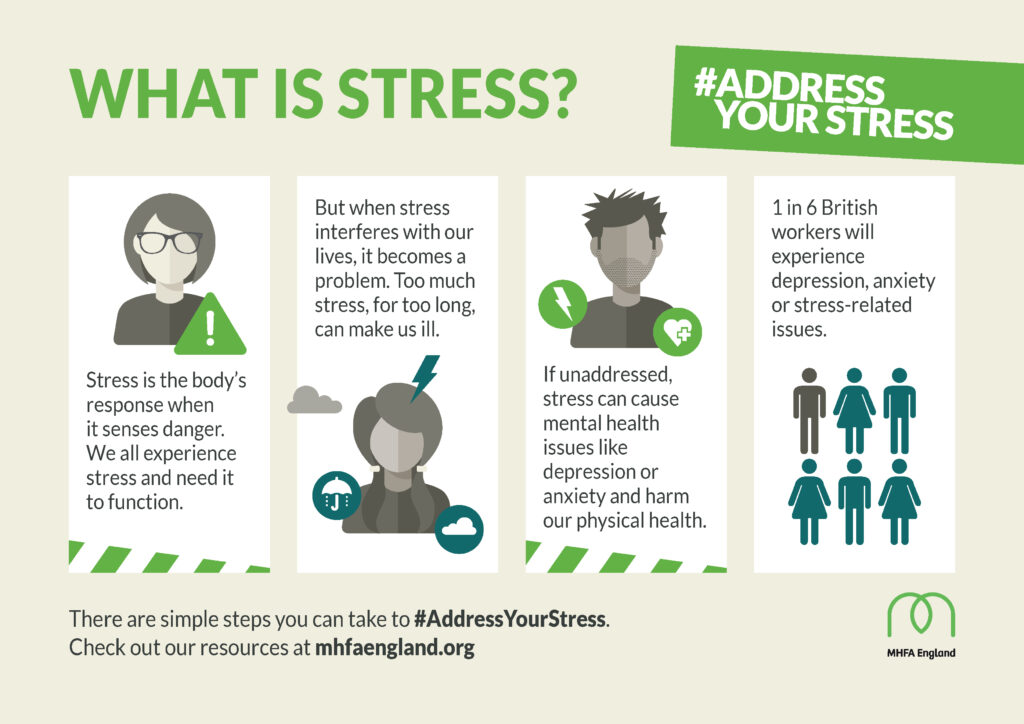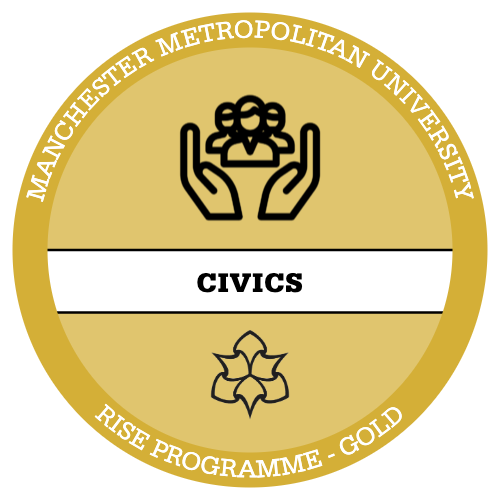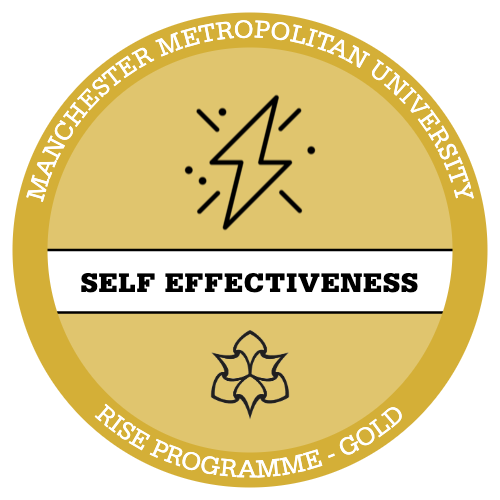Introduce

Image source: MHFA England
It is important to recognise when you are starting to feel stressed. To do this you need to be able to tune into how you are feeling and know where you are most likely to start feeling stress in your body. Some people have clear physical signs that they are experiencing stress. It might be a change in breathing patterns, tension in the jaw, headaches or nausea.
Develop
The Job Demands-Resources (JD-R) Model states that when job demands are high and job resources/positives are low, stress and burnout increase. Conversely, a high number of job positives can offset the effects of high job demands. The work stress model suggests that stress arises from the imbalance between the requirements of the job and the resources the employee has available to meet those requirements.

When you reduce job demands and promote positives, you will experience less stress and have a better sense of engagement and motivation.
Apply Your Thinking: Apply JD-R Model to an Early Years Setting. Reflect on your own career and answer the following questions:
What does your career involve? What are your day-to-day tasks? Do you enjoy going to work? Which of your job responsibilities feel overwhelming? Use the JD-R model to explore this in further depth by working through the following steps:
List potential job demands which are causing stress and leaving you feeling overwhelmed
How might these demands be addressed? Who is trying to help you? What might make a difference?
What are the job resources/positives that you experience daily in your role?
How might you address these positives to allow for balance and prevent burnout?
Reflect
The Stress Bucket is a visual representation of how pressure can build and a reminder of how to manage and cope with stress.

Image source: The stress bucket – Mental Health UK (mentalhealth-uk.org
You can see here that the bucket is filled up with different types of stress. Sometimes you might feel resilient and able to cope with these stresses, particularly if you’re able to identify what helps you cope with the stress.
Stop and Reflect: Use the worksheet below to consider your own Stress Bucket and identify what helps you reduce stress and how you can prioritise these things when pressures build.






